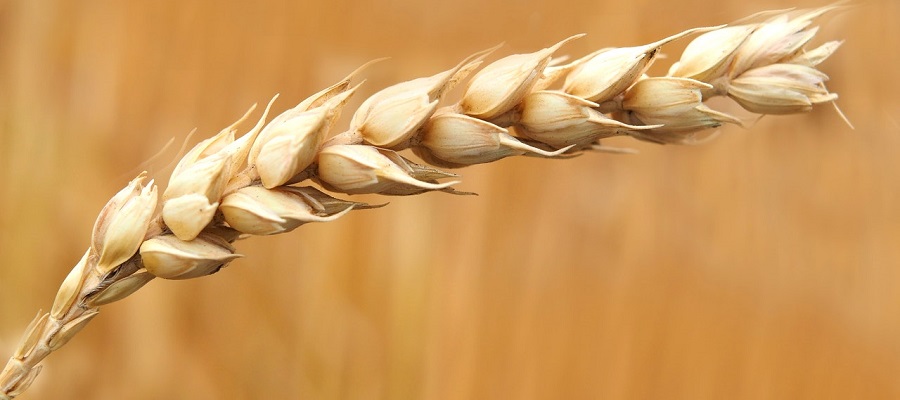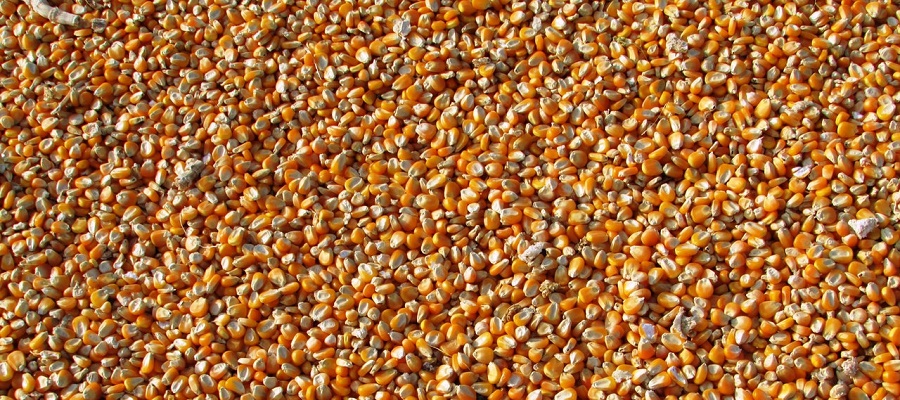Grain quality, also in wheat, is the most important indicator that affects the cost of production. Each granary is equipped with a special laboratory where it is tested. The grain is subjected to extensive tests, after which the quality and intended use are determined. Grain cleaning equipment is used . It allows you to remove various deposits and impurities that reduce its value.
How are samples taken?
First, samples are selected to be tested. The material is selected during the inspection, its testing is performed by the laboratory assistant strictly in accordance with GOST regulations. The number and volume of samples taken depends on the carrying capacity of the delivery vehicle. Many elevators perform the first sampling in automatic mode, although the regulations recommend sampling by a manual sampler.
"Each technique has its own advantages. For example, manual is proven and regulated by technical rules. But the inclusion of automation increases the accuracy of testing and eliminates the human factor. Our organization actively uses both methods," says Yulia Sagaidak, laboratory assistant at SME Nika-Tera.

Source: pixabay.com
The collected sample is transferred directly to the laboratory, where an average sample is isolated under auto-mode conditions (according to the standards, its mass should be at least 2 kg).
The next step is sensory analysis. With its help. the color of the grain sample and its smell are determined. It is necessary that the grain aroma fully complies with the established standards.
The next step is to determine the degree of infection of the grain by pathogenic microorganisms. For this purpose, the average sample is sown through special sieves with a diameter of 1.50 and 2.50 mm. If traces of pests are found, the degree of damage is revealed. The calculation of the indicator takes into account the number of parasites per 1 kg of grain.
How is nature calculated?
This indicator corresponds to the mass of 1 liter of raw materials and is expressed in grams (1 g / l). For the work is used a special purka.
"First, a coarse suspension is sieved out of the sample through the average sample (through a 6.00 mm sieve). The sample is weighed and added to the total mass according to certain calculations. A sample cleared of debris is used to identify an indicator of nature. This parameter is recorded in two parallels, after which the average value is displayed.
If the obtained test result is within the specified range, the delivery is accepted and the grain brought is considered good, otherwise the batch is rejected and returned," explains technical laboratory technician Natalia Bukh. With the help of an analyzer working according to the express method, the mass percentage of protein compounds and moisture content are recorded.
Once the grain is considered good, it undergoes the following analyses:
- Moisture resistance
- Gluten parameters
- falling number
- Impurity volume
- vitreous index
- the degree of damage to raw materials (diseases and pests)
Check the head grains.
The admixture of weed (grain) is determined by sowing the sample on different sieves. The revealed large crystals are mineral. The obtained result directly affects the setting of the grain category, which is determined after laboratory tests.
Parsing the canopy reveals the presence of additional inclusions (organic matter, spoiled material, etc.), grain impurities (sprouted, empty, broken). The next stage of testing reveals the mass of grains spoiled by a beetle turtle.
"Grains damaged by an insect pest are not classified in the DSTU, but their presence affects such an important parameter as the quality of gluten," explains Irina Korol, responsible for quality.
How is the humidity determined?
To find out this parameter, a grain sample is ground using a special mill. Before the test, the device is completely cleaned and disinfected to get the most accurate result. Better to use modern systems. In the past, for example, milling was done in LMZ mills. The grain was heated in the process, which reduced the quality and accuracy of the final figure.
According to leading experts, Swiss products are considered the best in the category of mills that control the process and do not raise the temperature of the sample. The milled flour is sent to a special container, which is immediately hermetically sealed to prevent the evaporation of moisture.
Every 10 days, a check is made on the milling size. For this purpose, the flour is additionally sifted through a sieve with a diameter of 0.80 and 1.00. Residuals are allowed up to a maximum of 5% at 1.00% and from 50% at 0.80%.
The milled grain is placed in all-metal boxes, where the weight of the weighed portions is brought to 5 g. The containers are sent to a special cabinet for drying, where they are kept for 35-40 minutes at + 130 ° C. The containers are then placed in a special oven. Then the contents are weighed.
"The average indicator is determined with express analyzers model Infratec and a moisture meter brand Aquamatic. All devices are calibrated before operation. We use a standard method to determine the moisture content," explains the technician.
How do I determine the drop rate?
To identify this parameter, a 300 g sample is taken from an average sample. It is cleaned from impurities (weeds and grain) and then ground through a sieve with a diameter of 0.80 mm. For these purposes we use a PERTEN mill. This equipment allows you to grind the extracted raw material of high quality and send it to sealed chambers.

Source: pixabay.com
Then, according to GOST standards, the moisture index is determined. From the sample protrude two canopies. Their weight is set according to the table (parameters are set at 6.40-7.30 g).
The resulting weights are transferred to viscous measuring tubes and filled with distillate to a volume of 25 cm3. The tubes are tightly closed and shaken vigorously. Thanks to the stirring rod, all particles merge into a single substance. After mixing, the tubes fall into a container where they are kept in a water bath.
During this process, the contents of the tubes are automatically stirred intensively (the stirring rod starts to rotate 5 hours after the start of the process). After one minute they stop working and freeze in the upper position. A free fall is performed in the volume determined by a special counter.
"The falling number corresponds to the indicators in seconds. The faster the process, the lower the quality. During the analysis, we determine the class of material according to GOST standards. This event allows us to determine the mobility of a specialized enzyme involved in the degradation of starch and glycogen, "says Irina Korol.
We use this parameter to determine baking performance. The optimal falling number parameter for wheat flour is set at 235 ± 15 s. If the result is reduced (up to 150 s), it can be assumed that the starch is gradually degraded and the dough itself begins to blur, which negatively affects the quality of the bread.
If the falling number is set in the range of 150-180 seconds, the dough will become too thick. Now, the bread is baked in a dark color with an ugly crust. The best indicator is 230-330 s, which results in lush and rich baked goods. If the fall number is too high, the bread becomes dry, pale and quickly begins to stale.
How to recognize gluten?
To do this, we take a canopy from 25 g, so that the total weight of wet embers from 4 g We take a sample from the meal and fill it with distillate in a volume of 14 ml and knead it into a dough mixer. The ready sample is formed into a ball and put into a special mortar, where it is kept for 20 minutes. After that, the gluten washing procedure is carried out.
At a temperature of + 18⁰C, the shell is washed out, releasing a starchy substance. This process is carried out automatically until the gluten is completely cleaned. The mass is wrung out and weighed by hand. With the help of the apparatus of the deformation index (IDK), the indicators of its elasticity are determined. These data are necessary to determine the baking properties of wheat.
"If this parameter is too low, the bread does not rise well and the crust breaks. With an increased level, the body begins to blur. For this reason, companies use grains of different qualities to obtain high-quality raw materials for the baking batch. It is also necessary to use special equipment for the production of flour , with which you get really high-quality material. " - says Irina Korol.
"Drunken bread": what is it?
Grain samples are selected and analyzed for parasitic fungal pathogen content. Samples infected with a fungus (Fusarium) are detected. Products from such flours are dangerous to human health and not suitable for food.
Bread made from Fusarium flour is called "drunk". When used, it causes intoxication, the symptoms of which resemble the condition of a drunk person. The victim experiences nausea, weakness, severe vomiting begins. Gradually, the symptoms disappear by themselves and do not cause significant damage to health.
On average, we need about 1.5-2 hours for an analysis, but at the height of the harvest, when the farm is under increased stress, the time for research and selection of wheat samples is reduced.


